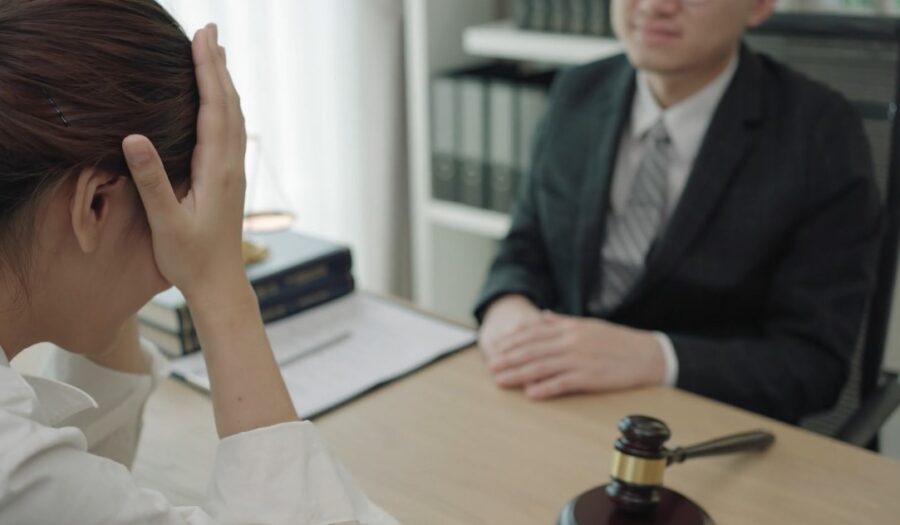Legal professionals hold a significant responsibility. Clients expect attorneys to serve as allies, guides, and guardians of rights within a dispute or transaction.
There are times, though, when an attorney might disengage from representing a client. The guidelines that govern such a decision aim to uphold ethical standards, protect the integrity of judicial processes, and avoid undue prejudice to anyone involved.
I prepared a detailed exploration of circumstances that oblige or permit withdrawal, along with the procedures and ramifications associated with that choice. Let’s get started.
Table of Contents
ToggleKey Highlights
- Mandatory Withdrawal: Lawyers must withdraw if continuing violates ethical or legal rules, such as assisting with illegal actions or being unfit to represent due to personal issues.
- Permissive Withdrawal: Attorneys may step away for valid reasons, like nonpayment, unreasonable demands, or offensive objectives, provided they follow ethical guidelines.
- Procedures for Withdrawal: Lawyers must obtain court approval (if applicable), provide reasonable notice, and return client documents and unearned fees to avoid client prejudice.
Non-Negotiable Situations
1. Breach of Law or Ethical Standards
Attorneys are governed by a collection of rules that outline professional conduct.
For instance, if a client insists on taking blatantly illegal actions and demands counsel’s complicity, that attorney has no choice but to withdraw.
2. Impaired Ability to Represent
American Bar Association also states that every client deserves capable and diligent representation.
According to this resource, when a lawyer is physically or mentally unable to handle legal tasks effectively, that professional must step away.
Illness or ongoing personal circumstances that prevent rigorous advocacy would make continued representation unworkable.
3. Client Discharge of the Attorney
Clients reserve the right to terminate the relationship at almost any point, with or without a clear reason.
Perhaps a client feels the working relationship has deteriorated, or a client doubts the strategy being used. Whatever the rationale, a lawyer must respect that decision and cease representation.
Permissive Withdrawal

Mandatory rules aren’t the only avenue. There are occasions when a lawyer may withdraw—even if it creates hardship for the client—provided certain conditions exist under Rule 1.16(b).
A blunt approach often suits attorneys who find themselves dealing with intractable, uncooperative, or ethically problematic clients. The following situations illustrate scenarios in which a lawyer can step away without running afoul of ethics rules.
Persistent Criminal or Fraudulent Conduct by the Client
When a client insists on forging ahead with a fraudulent plan and expects the attorney to provide assistance, it becomes permissible to exit the representation.
In fact, many lawyers would argue that failing to exit under those circumstances is a recipe for ethical disaster.
Offensive or Repugnant Objectives
Sometimes a client’s goals can clash strongly with a lawyer’s personal or moral stance. If the attorney is asked to champion an outcome deemed extremely offensive, stepping aside is allowable.
No one wants to be the mouthpiece for something that goes against deeply held principles.
Failure to Fulfill Obligations
Attorneys don’t work for free—unless they specifically agree to do so. When a client repeatedly fails to pay fees, ignores invoices, or refuses to cooperate with essential requests, that lawyer has solid grounds for calling it quits.
Adequate notice must be given, but an attorney is not expected to finance the representation indefinitely.
Unreasonable Financial Burden or Unrealistic Demands
Work conditions that become unreasonably expensive or difficult pave the way for an exit.
For instance, if a client’s behavior makes representation nearly impossible, the lawyer may opt to stop. That decision usually follows attempts to fix the situation or clarify expectations.
Other Justifications
Rule 1.16(b)(7) allows for withdrawal if there is another valid reason. Although “valid” can be subjective, courts often respect well-founded arguments that demonstrate why continuing to serve the client is detrimental or unsustainable.
Procedures for Withdrawing

Stepping aside mid-case isn’t as simple as sending a farewell note. Court rules and ethical mandates require a formal process to ensure all parties receive appropriate notice and the client’s rights aren’t trampled.
Obtaining Court Approval
For any matter under judicial oversight, an attorney typically needs permission from the presiding judge before bowing out. Courts do not rubber-stamp withdrawal requests.
If a judge decides that the exit will harm the client or disrupt proceedings too much, permission can be denied. That puts the lawyer in a difficult spot: forced to stay on despite the desire to leave.
Sending Reasonable Notice
Clients must be notified far enough in advance to arrange a new lawyer or prepare for upcoming hearings. Sudden departures without warning create chaos and might trigger disciplinary scrutiny.
Providing a timeline for transition or an explanation of needed next steps shows professional courtesy and compliance with ethical guidelines.
Safeguarding the Client’s Position
Upon departure, returning client documents and unearned fees is crucial. Even if a lawyer wishes never to hear from the client again, that professional can’t keep case files or advanced payments as leverage.
Such actions would violate professional rules and potentially lead to grievances.
Ethical and Practical Ramifications
An attorney’s choice to withdraw resonates beyond the moment of sending a letter to the court or a polite email to the client. Ethical duties remain intact, and practical outcomes can linger.
Confidential information must remain protected indefinitely—no attempt to punish the client or justify the withdrawal should ever include disclosing secrets revealed during representation. Lawyers also carry a reputation to maintain, regardless of their level of education.
Courts and colleagues might judge a withdrawal harshly if it appears to be motivated by trivial frustrations or petty disputes. Clients may share negative reviews or file complaints with professional boards.
Litigation schedules can be thrown off, trials can be delayed, and the entire process can feel like an obstacle course. The broader legal community relies on consistent representation so that disputes can be resolved efficiently.
From a client’s standpoint, learning that legal counsel intends to withdraw can feel like betrayal. When a professional is entrusted with the mission of defense or advocacy, that professional’s departure might look like a personal condemnation.
Sometimes, clients will object or protest, leading to contested motions where the court has to decide if the departure is justified. That doesn’t help anyone’s stress level.
The Role of Communication
It’s no secret that many withdrawal scenarios stem from a breakdown in communication. Attorneys who maintain transparent dialogues with clients, explaining the basis for fees, possible outcomes, and obligations, often avoid problems that lead to withdrawal.
Meanwhile, clients who keep lines of communication open—answering questions promptly, providing documents, and respecting professional expertise—usually have more harmonious relationships with counsel.
A lawyer who suspects that representation is heading down a rocky path should schedule an honest conversation with the client. Evasive or unresponsive clients, on the other hand, heighten the risk of conflicts escalating into a forced exit.
Respect flows both ways: attorneys must ensure they are responsive to client inquiries, and clients should be clear regarding goals, concerns, and financial limitations.
Real-World Examples

Attorneys sometimes tell colorful tales of clients who sabotage their own cases or demand the impossible. One might imagine a scenario where a defendant in a business dispute tries to conceal financial records and urges the lawyer to mislead the court.
Others might picture a domestic relations client refusing to pay outstanding bills, all while criticizing the lawyer for not producing miracles. In such moments, ethical obligations override the desire to keep collecting fees.
The right choice can be abrupt and awkward: exit. There are also instances where an attorney’s personal circumstances take a turn for the worse. Suppose a lawyer falls seriously ill during trial preparation.
Continuing would be irresponsible, risking major errors or omissions that harm the client. Although frustrating for everyone involved, stepping away is the proper move to guarantee competent representation later on.
No matter the context, the best attorneys understand that continuing representation under impossible conditions does more harm than good.
Courts and professional bodies generally acknowledge that viewpoint when the reasoning is solid and procedures are followed.
Summary
The legal field has stringent rules to deal with lawyer departures during active cases. Mandatory withdrawal arises when ethical or legal violations loom.
Permissive withdrawal is possible if circumstances justify it, though the lawyer must abide by formal steps and cannot abandon a client unfairly.
Balancing professional principles, financial considerations, and moral duties can lead to tough calls, but it safeguards the justice system in the long run.
No one relishes dropping a client midstream. However, ethical principles demand that lawyers do what’s necessary to uphold integrity and provide competent advocacy—sometimes that means stepping aside.
A smooth transition, coupled with respect for court procedures, helps minimize any damage and keeps the wheels of justice turning.
References
- americanbar.org – Rule 1.16: Declining or Terminating Representation








